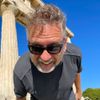Week 192: Samothraki, Limnos and back to Lesvos
Visiting Samothraki and the Sanctuary of the Gods before returning to Limnos and home to Mytilini, Lesvos.
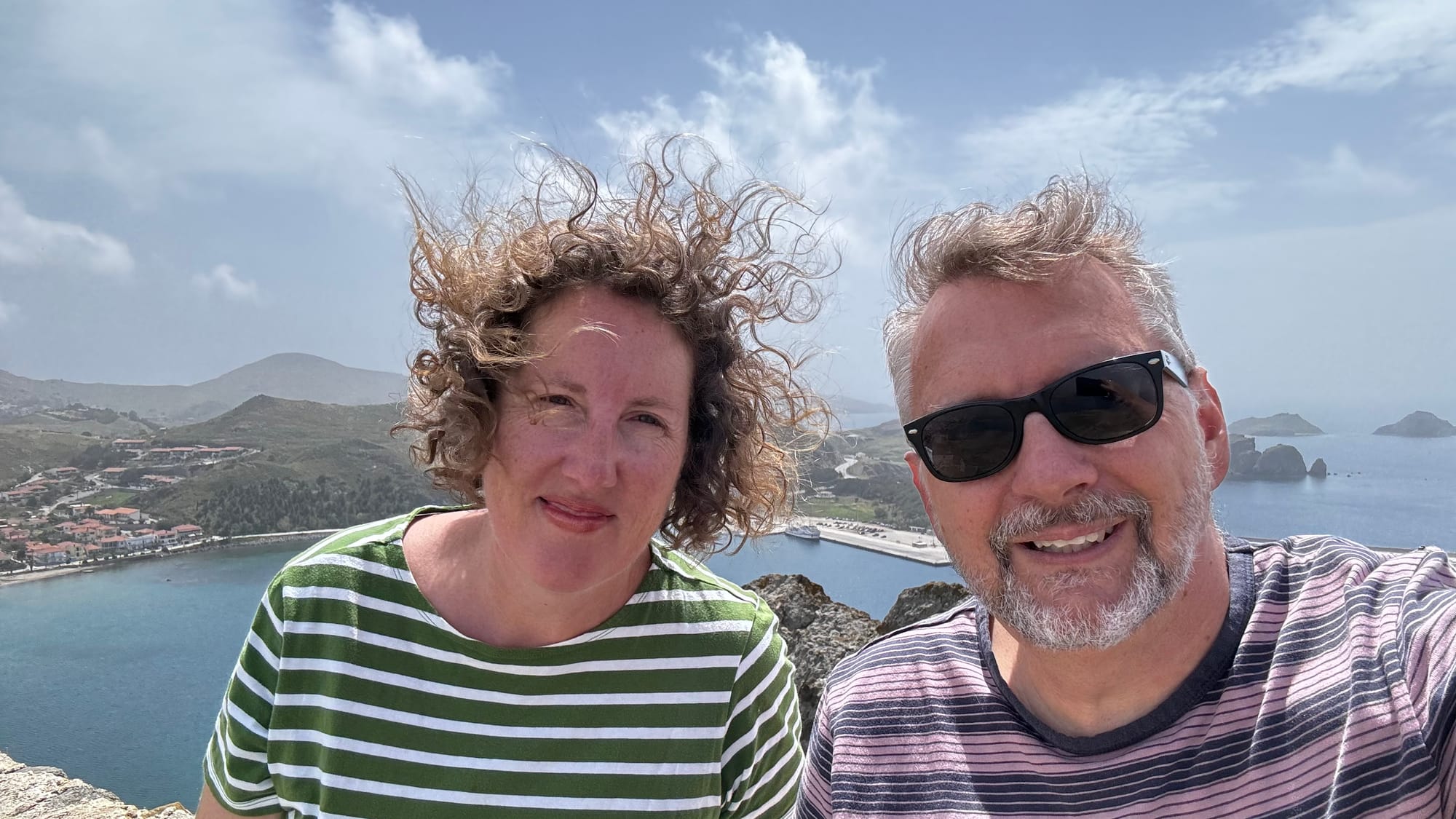
One fun thing about having no real goals is that you can make them up as you go along. We have a boat and a lot of sea to explore. Samothraki is the most northwestern island in Greece—one of the "four corners," if you like. We were close; we had a bit of a weather window, and so we set off Monday morning to get there.

Unfortunately, not every crossing is perfect, and this one was far from it. The big storms and winds that have been flying around have caused huge swells further south, and despite the wind having settled, the sea was still rolling up from the south. It's not a safety issue for Matilda, but the rocking and rolling do make it very uncomfortable for the passengers!
It was a crystal clear day, and the moment we turned the corner of Limnos, we could see Samothraki, some 30 nautical miles away, rising out of the sea. It's an interesting island – basically a very tall mountain rising up. The centre is uninhabited, and there are no roads there. There's a single road that runs around about 70 per cent of the outside. It doesn't even circumnavigate because the south side is so mountainous.
When we arrived, the first thing we did was hire a car. A very friendly man gave us a discount and allowed us to take it that afternoon (so a two-day hire for one day sort of). We explored the port, had a delicious lunch, and then drove up the hill to the Chora (central village), taking a local hitchhiker with us.


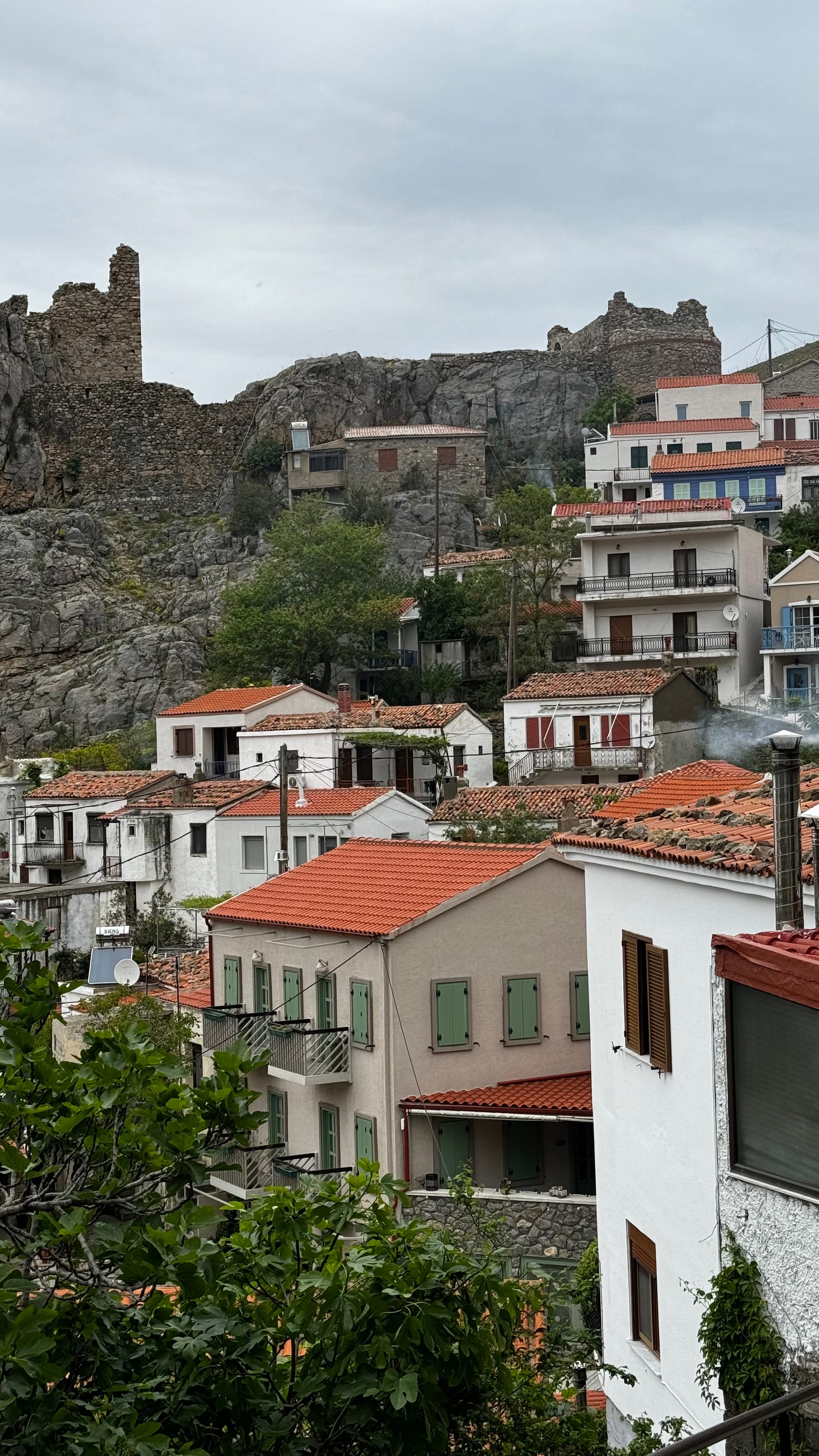


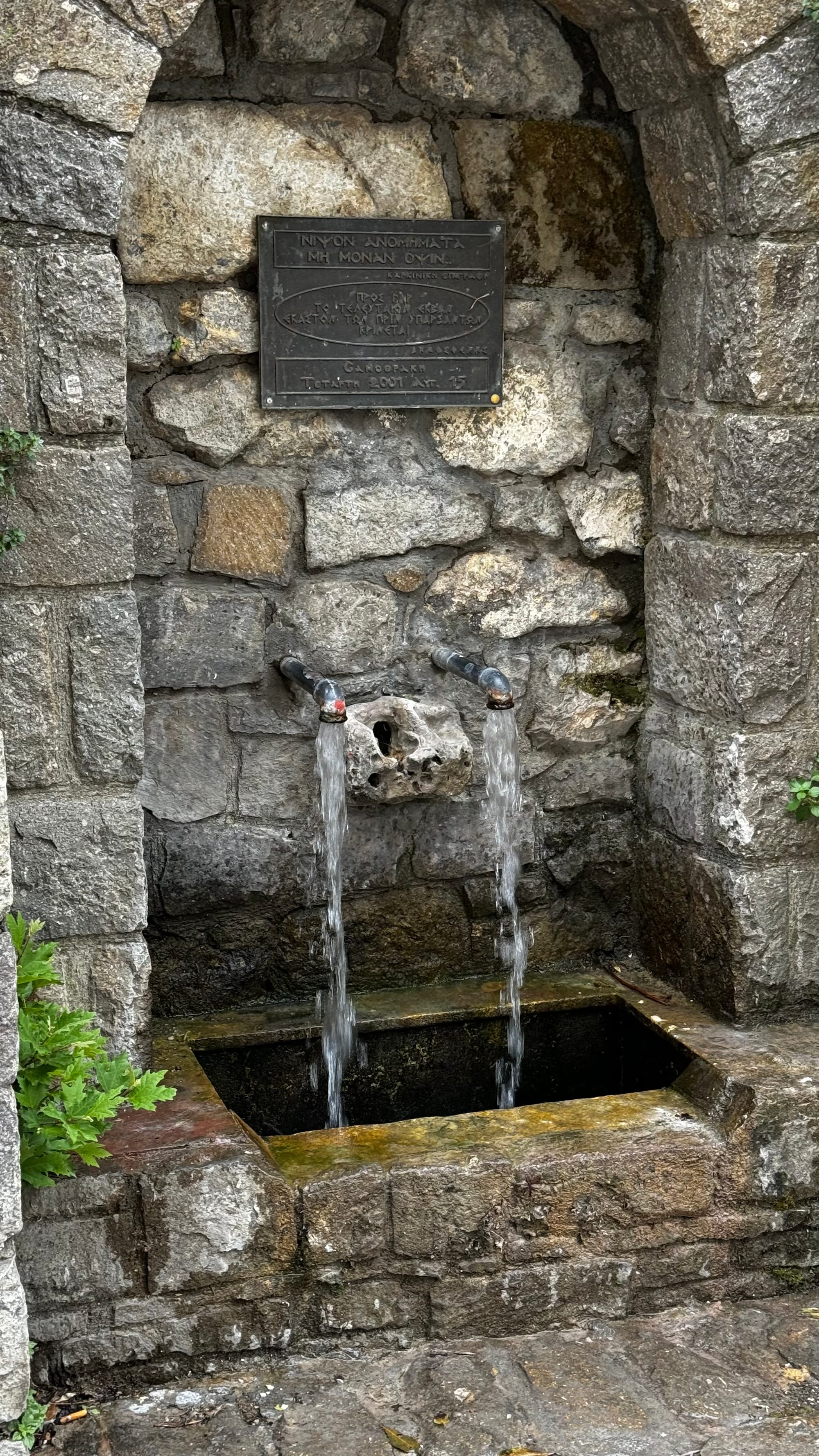
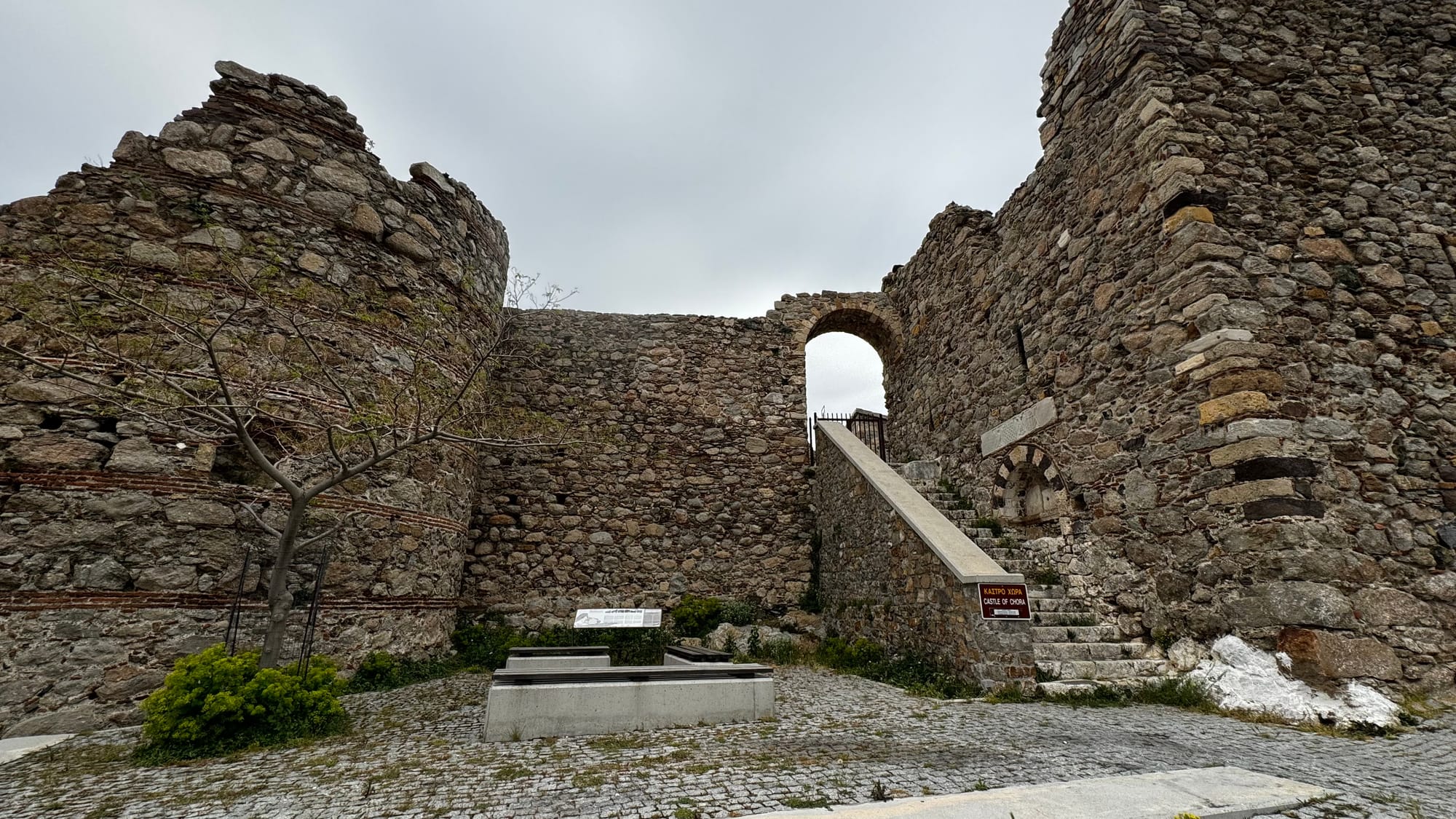
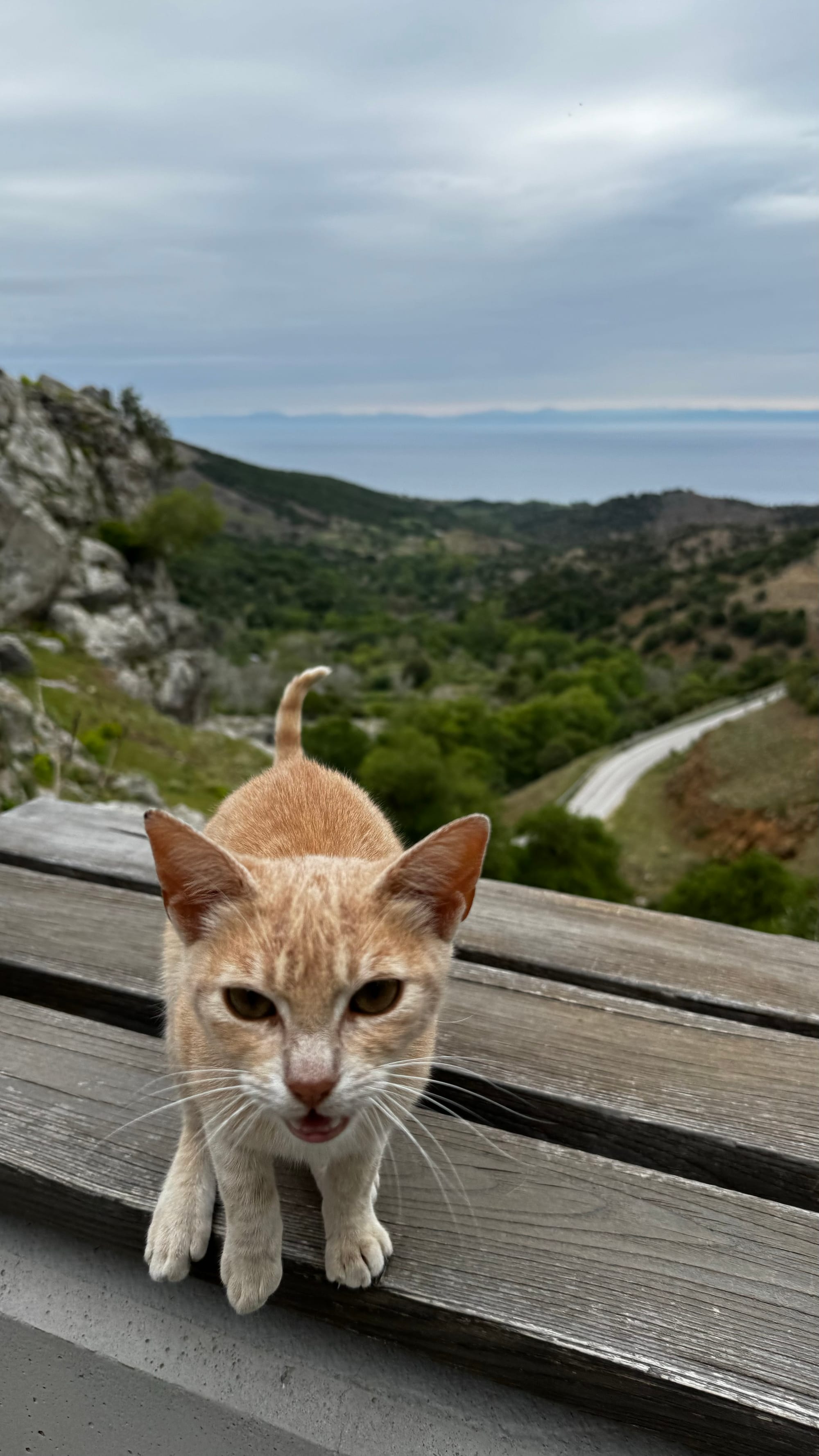
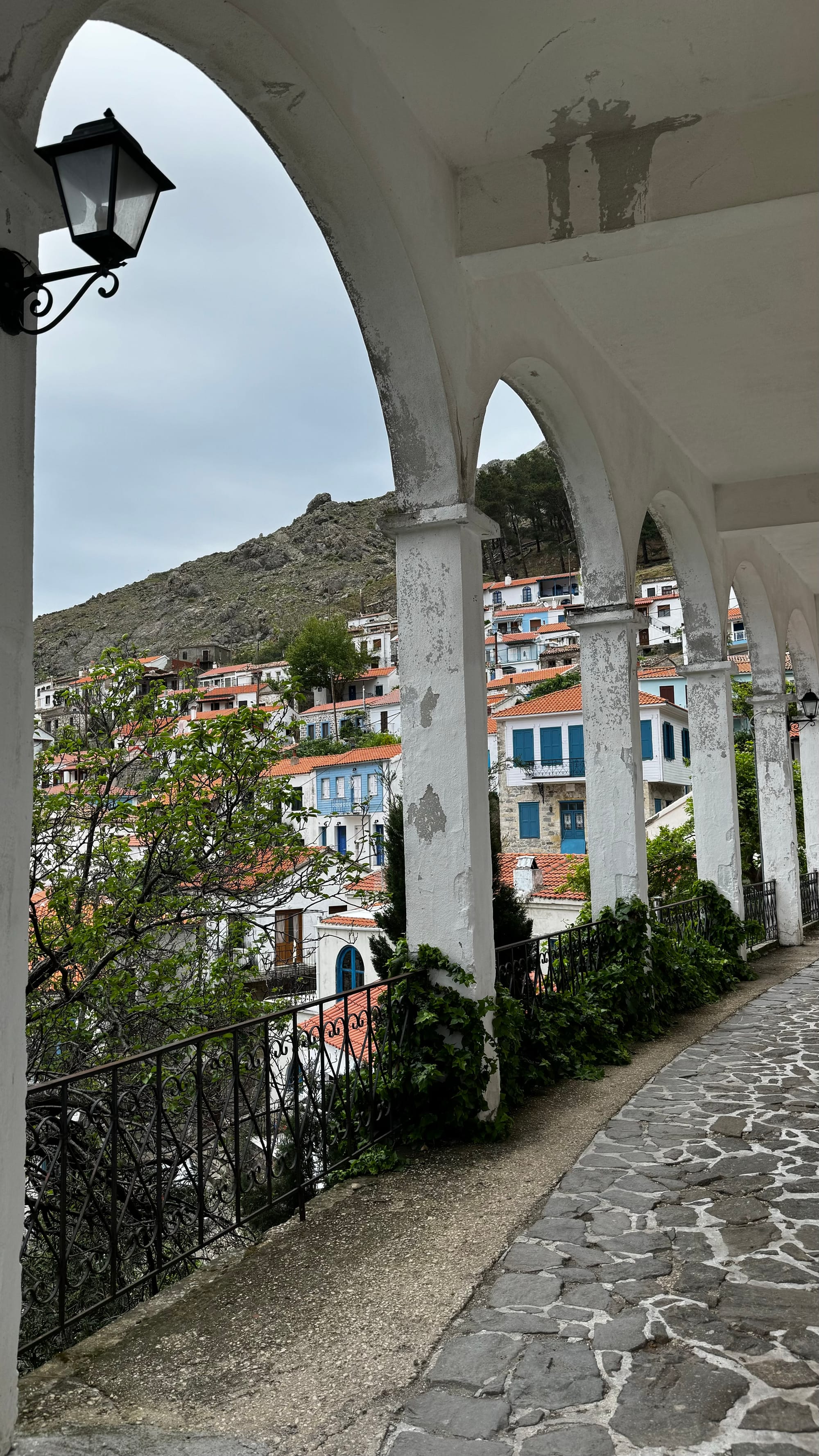
Views from the Chora in Samothraki
Samothraki is very small (around 2,000 people), and hitchhiking back and forth between the main towns seems to be a fairly common way to get around. There's every chance your neighbour will pick you up.
The Chora is a lovely old town spread up a mountainside that's dominated by a large church and an old castle. We enjoyed wandering through the streets and the spectacular views. Like many smaller islands in Greece, it's clear that it gets a holiday population. There are many small hotels, but now, even in late April, they are all still closed.
On Tuesday morning, we set off to drive around the island (well, to the end and back again, with the previous point on no circumnavigable road being noted).
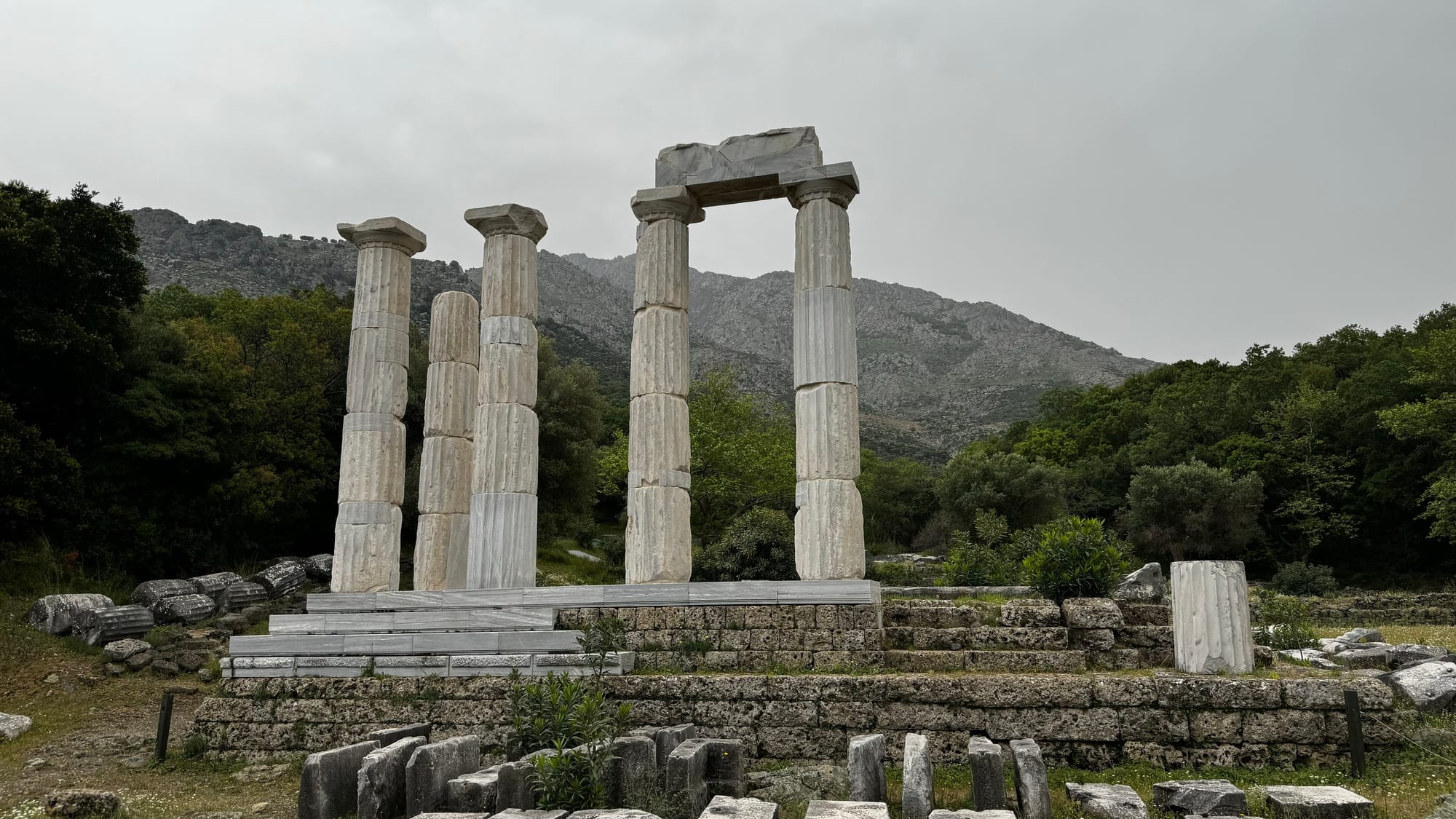
Samothraki is famous for one particular historic site, the Sanctuary of the Gods, which is a cult centre that was famous in Ancient Greece for a few reasons. It had a "mystical" joining ceremony that was very secret. Not a lot is known about it—it's known that there were at least two levels of initiation, that the second level was occasionally deadly, and that the initiates wore red belts to signify their status.
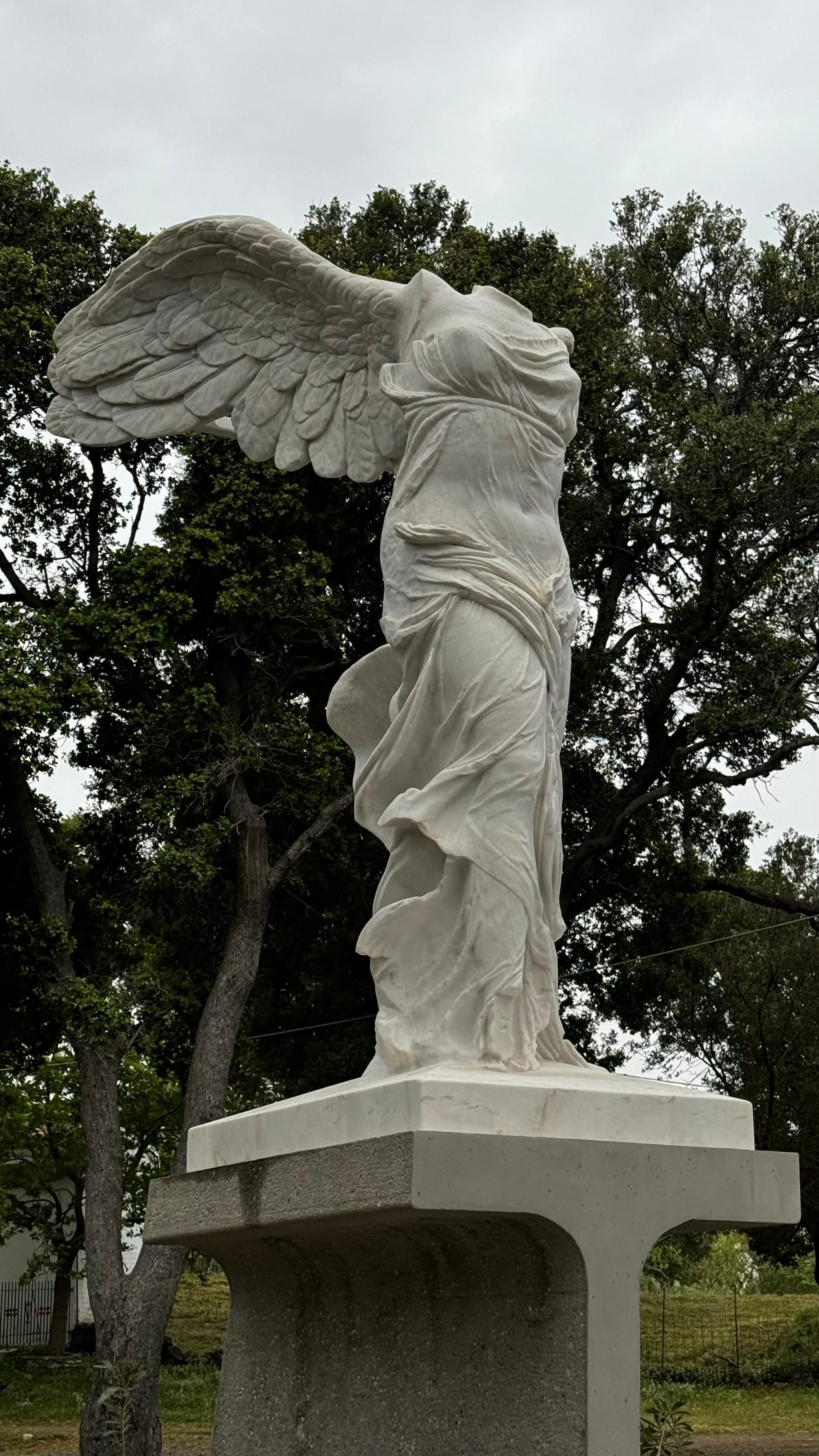

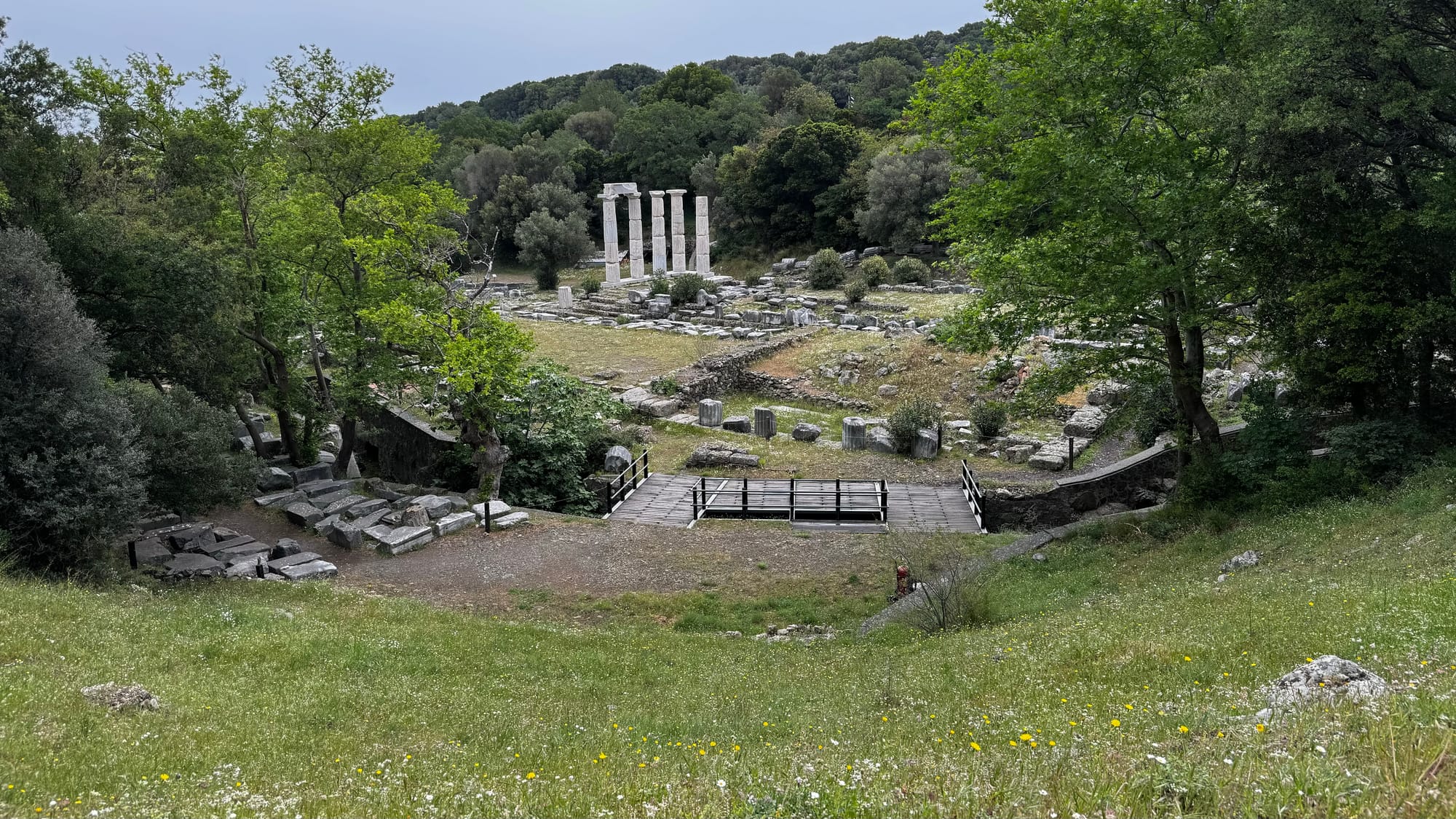


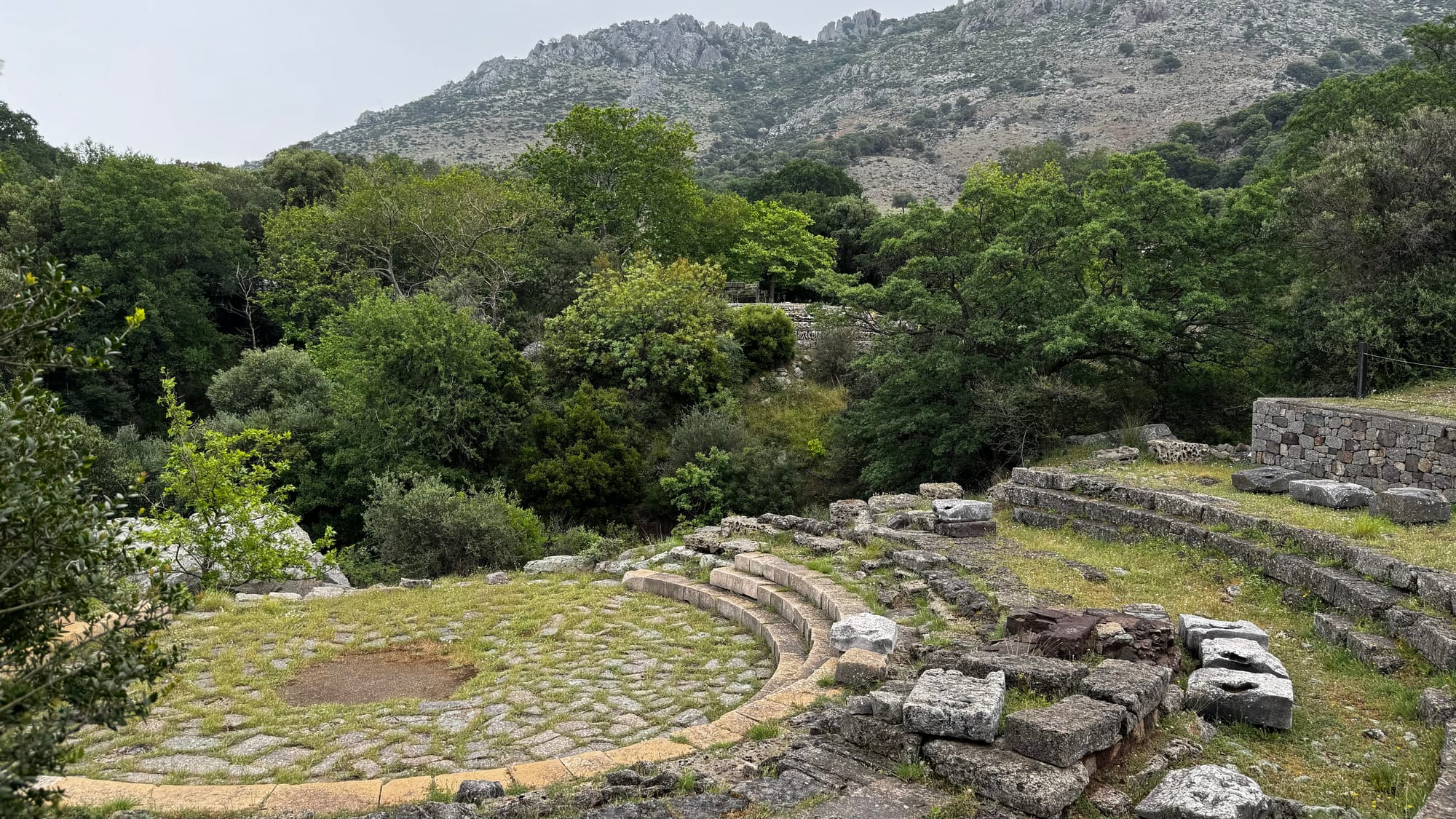

Views around the sanctuary of the gods. The Winged Nike statue is an exact replica of the original in the Louvre. The snail was huge—apparently, they are a local delicacy and appear after the rain. It was a bit larger than a golf ball.
What's really fascinating is that the gods it worshipped were secret—they were NOT the traditional Greek gods at all, and archaeologists believe they were, in fact, much older. They were most likely a variant of gods worshipped in Arabia / the Middle East.
The famous statue of the Winged Nike, which stands at the top of the stairs in the Louvre, was discovered here and, of course, taken to France, much to the chagrin of the Greek people now, who would like it returned. Thank you very much.
We were accompanied through the sanctuary by a very bored and very friendly security guard who talked us through a lot of the history. I asked her the circumstances of the statue being taken and she was quite forthright in saying that while it's unclear, what we do know is that the local Greeks did NOT value the ruins in the same way at all.
A case in point. Beneath where the statue of Nike was excavated was an amphitheatre. There are photos of the amphitheatre from the time, which show a spectacularly well-preserved building. Within months of the archeologists leaving, it was gone. Mined for the marble which was reused as building material, typically ground up to make cement. We've seen this before in Milos, where the ruins of the ampitheatre there include remnants of lime kilns where they were grinding up the ornate marble as well.
Another fun story, which I'm not sure about, is a theory on how the "power of the Gods" was manifested. We were told people drank a heavy liquid full of iron. They entered the temple in the dark, which had large magnets positioned around it. You could "feel" the pull of the gods inside you. It sounds good, but I have my suspicions.





Walking towards the waterfall (we turned back, a lot of water), old Venetian fortress, thermal baths that have seen better days.
From the sanctuary, we continued around the island, stopping at a thermal spring (horrible, we were prepared to bathe, but quickly moved on). We then saw a Venetian fortification that was being restored and walked up along a river towards a waterfall. The rivers and waterfalls are what Samothraki is most famous for. There are no great beaches on the island (all rock and large pebbles), but the rivers and waterfalls are where the locals spend much of their summer swimming.
After all this, we pushed on to the end of the island. The road deteriorated more and more. It is poorly built right on the edge of the sea, and large sections are washed out and collapsing. There were also goats everywhere. Samothraki really is the island of goats – and kids! With spring, baby goats are everywhere. We had to drive carefully to avoid them.

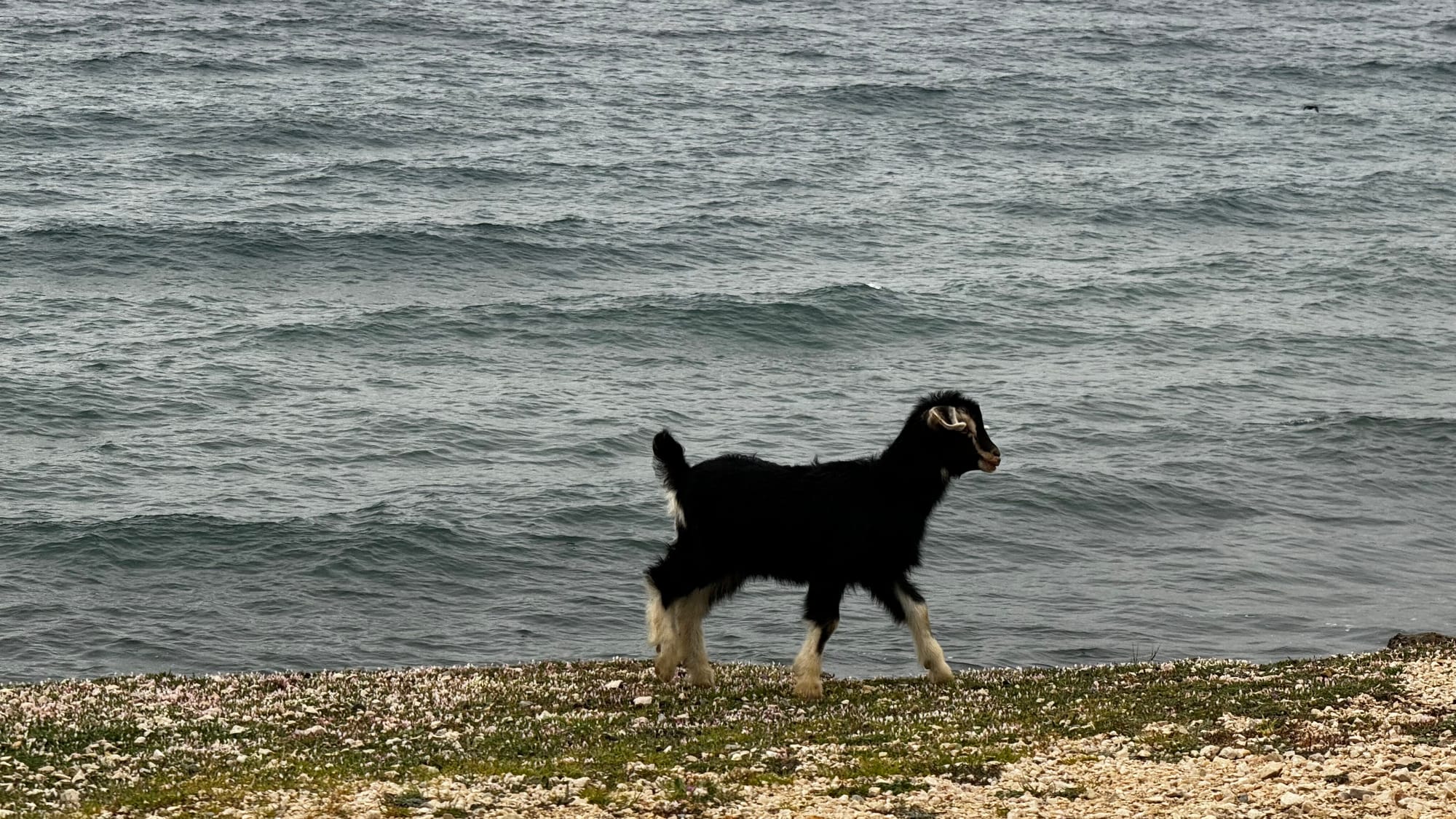

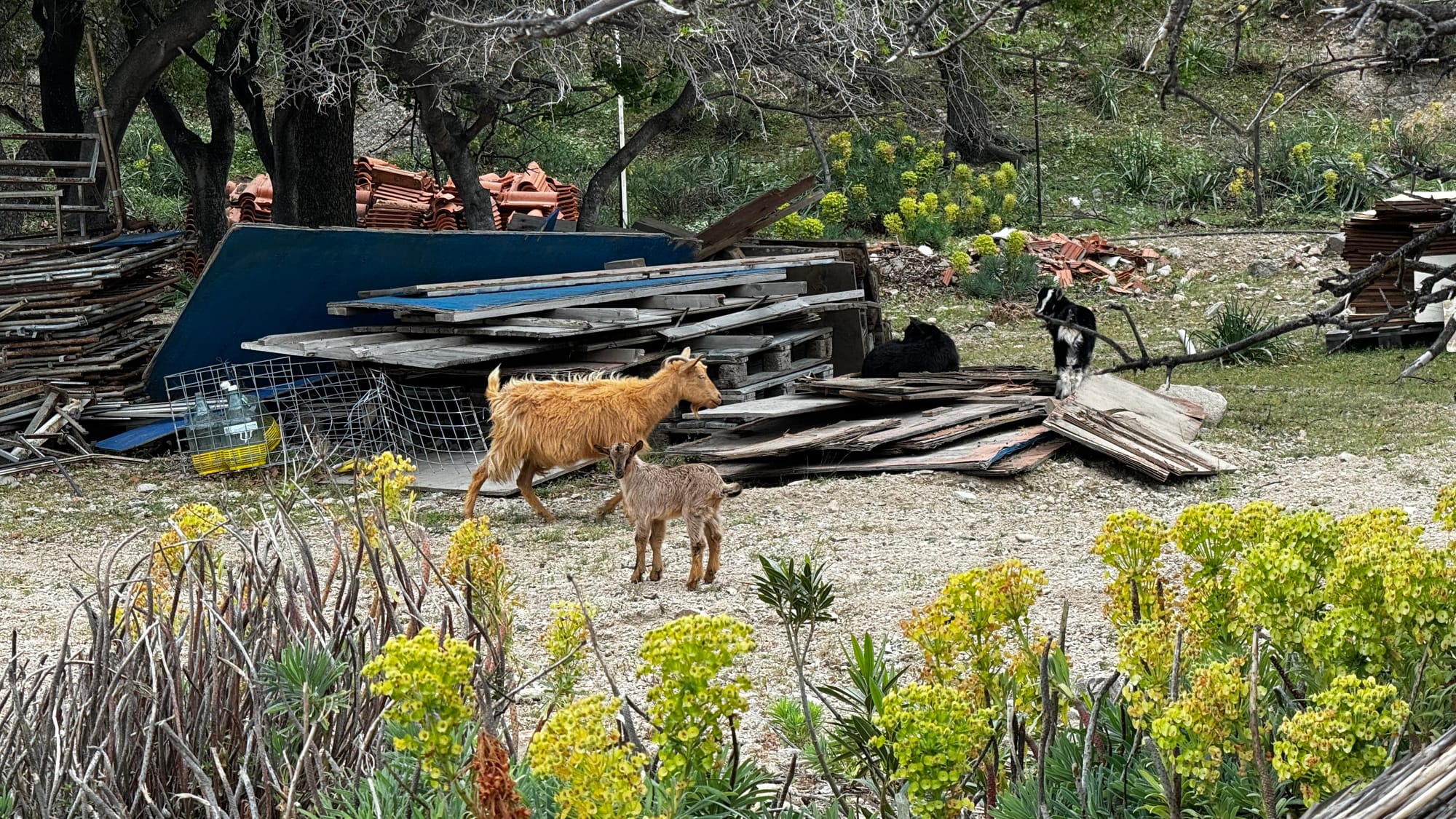

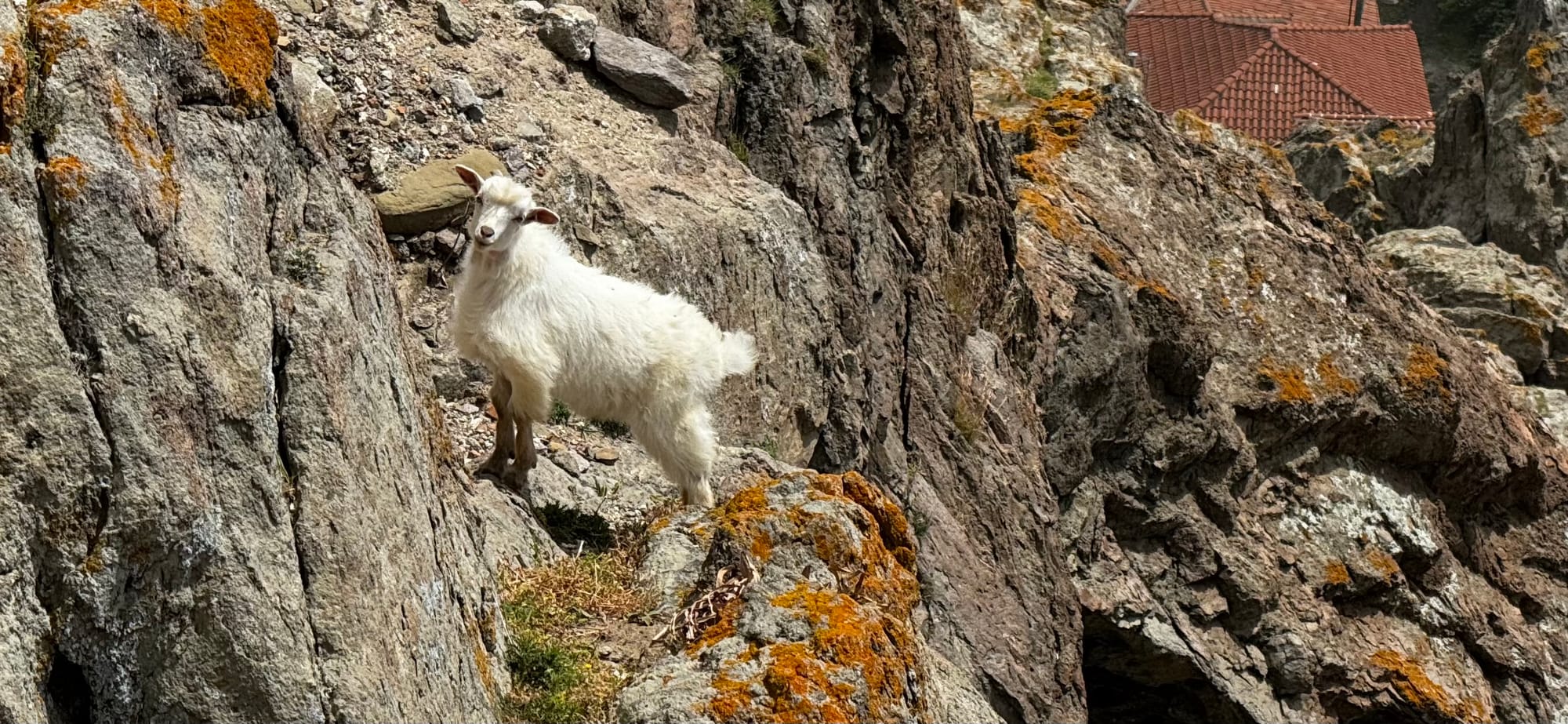
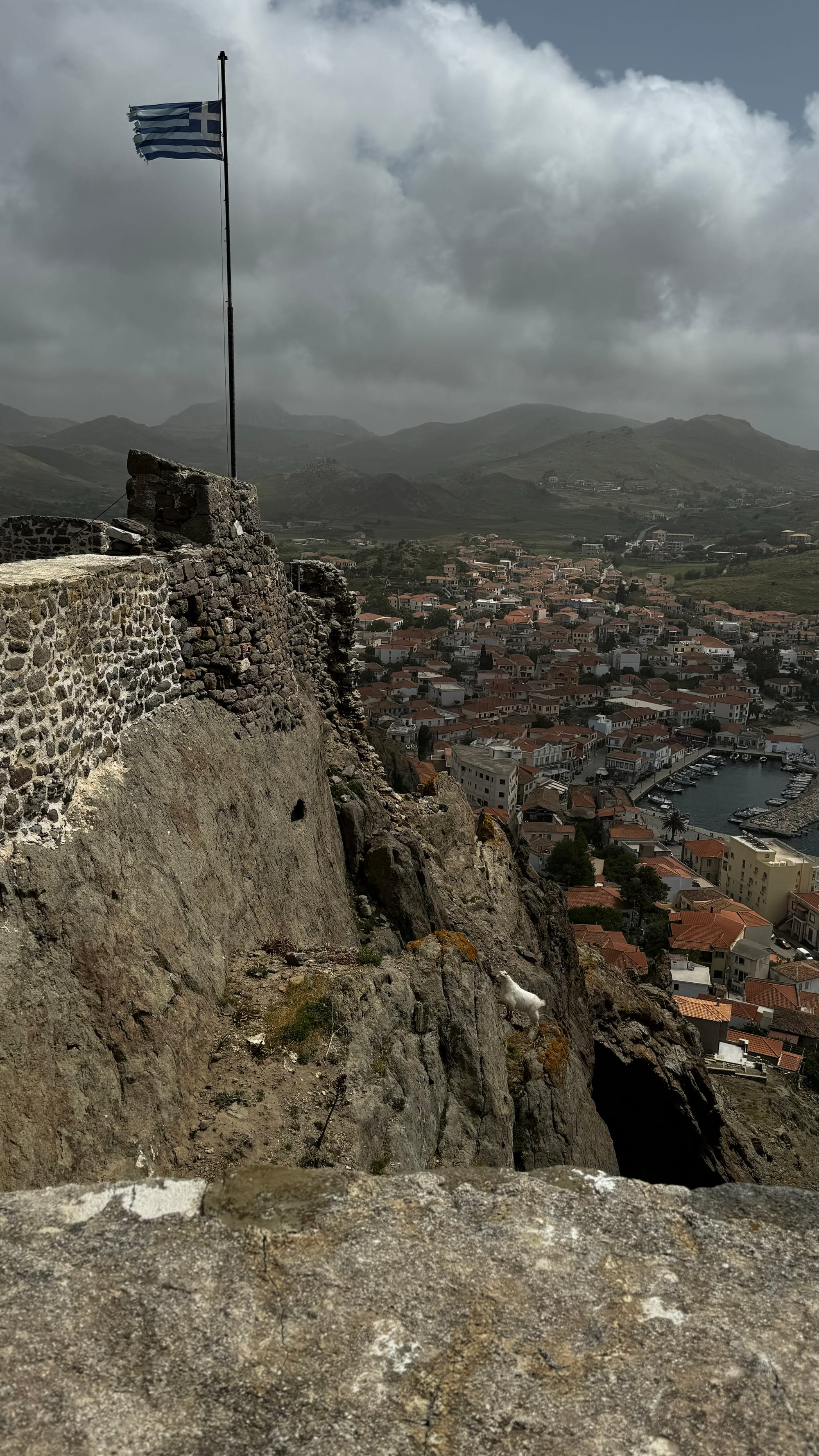
The goats of Limnos and Samothrace
The night was rough on the wall in the port, with lots of noise from the storms which are still in the area. The storms were all southerlies coming up from the Sahara and of course, dumped thick red sand all over the boat.
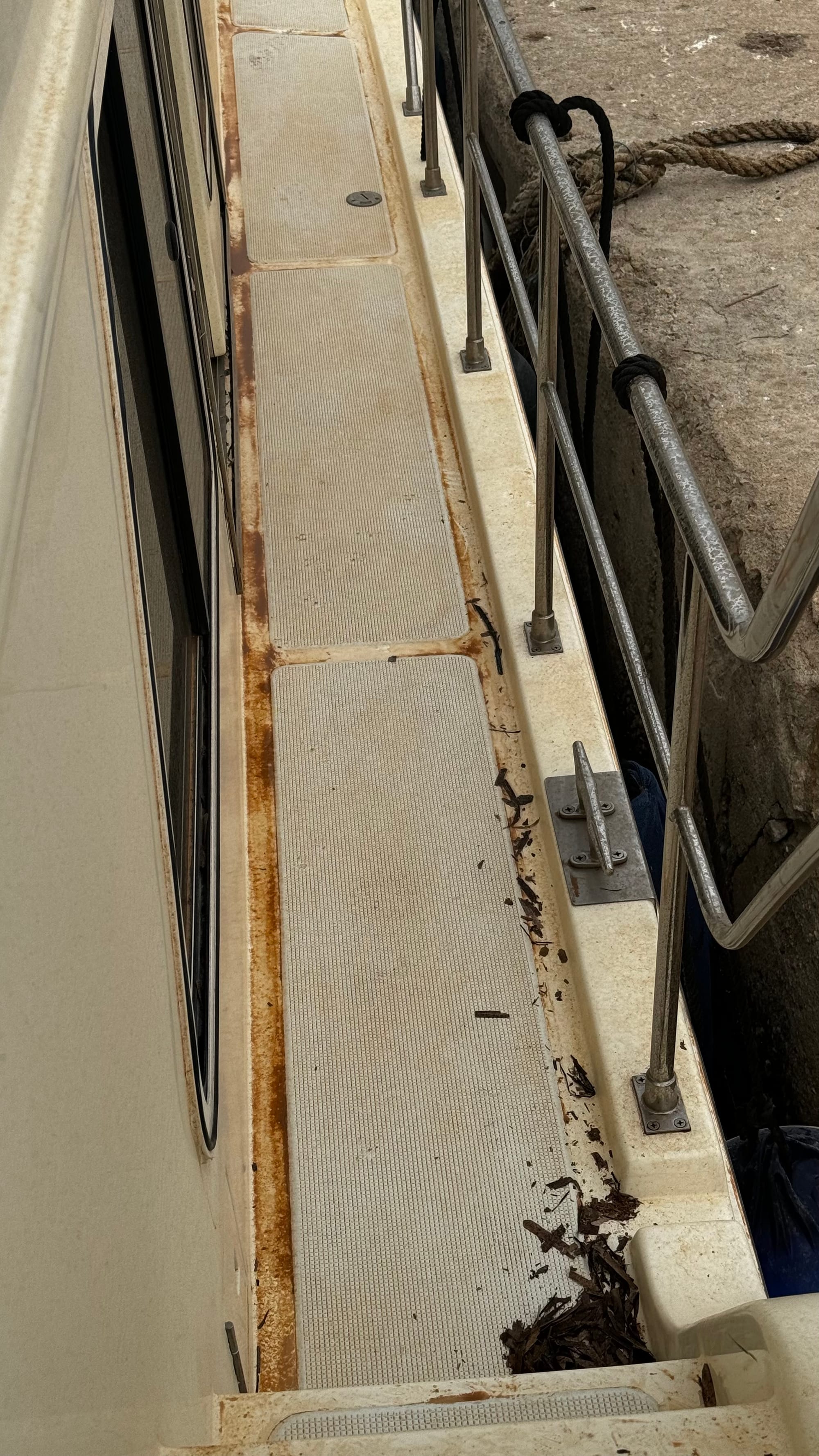
When we left in the morning to cross back to Limnos, this time, unlike the first crossing, where we could see the island the whole way, Samothraki disappeared behind us in the gloom after only a few miles. We travelled in the grey for almost five hours before we saw land again.
At Limnos, we headed back into the port of Myrina because we enjoyed it so much and because friends from Mytilini, Thomas and Irene were planning to be there. Our goal was to eat sushi at our favourite restaurant.

Unlike earlier in the week, when there was no one around, Limnos had started to pick up. We spent all of Thursday here again and on Thursday night, there were about eight private boats in the harbour. The wall was actually full, and some had to anchor out. The season must be starting for real!

Of course, our season is interrupted! After two weeks away, it was time to head back to Lesvos in preparation for our month of travel. The weather window was good, so on Friday, it was the long haul from Limnos back to Lesvos on the top corner, then on Saturday, another long haul around the island and back into the marina.
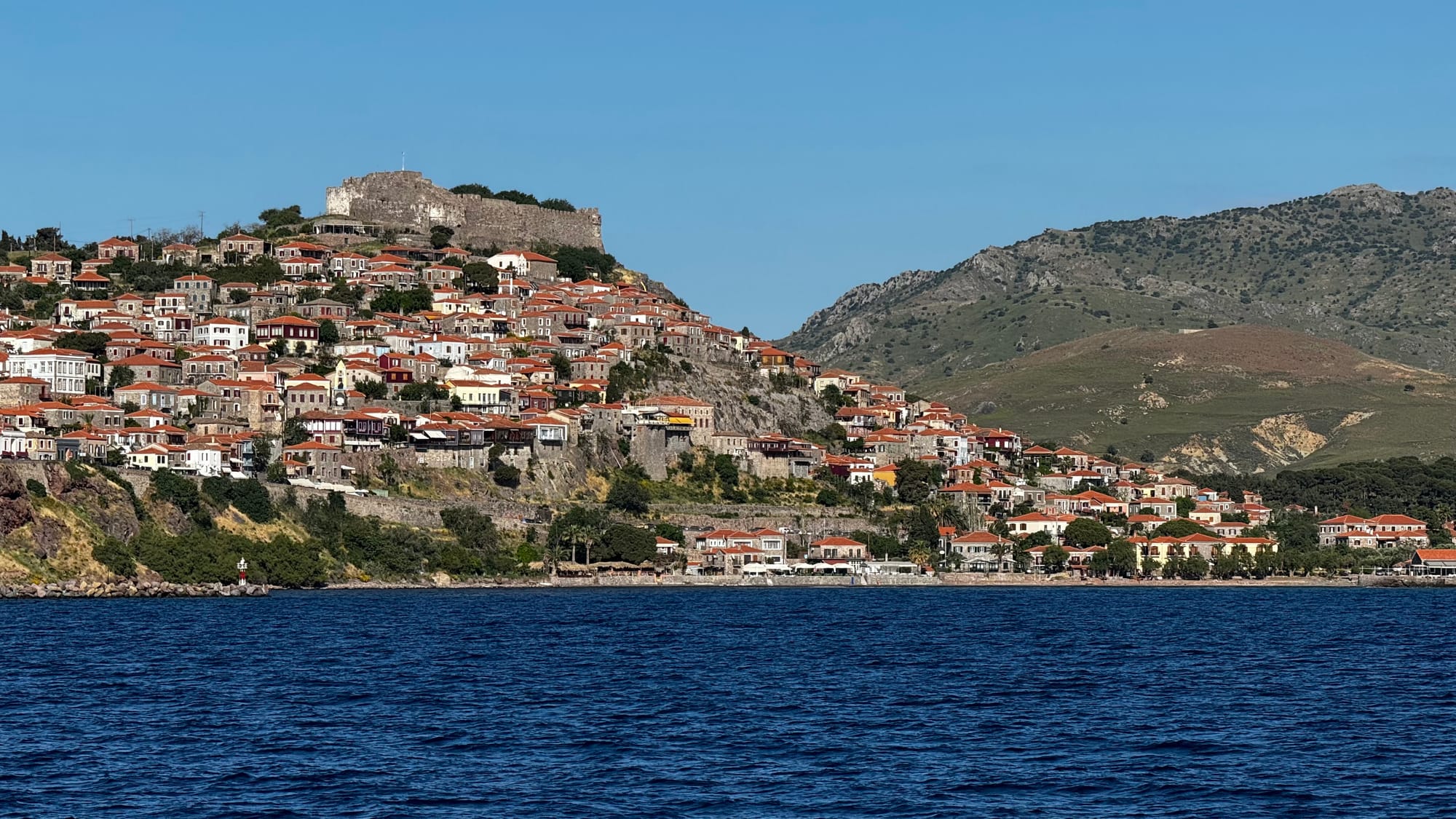
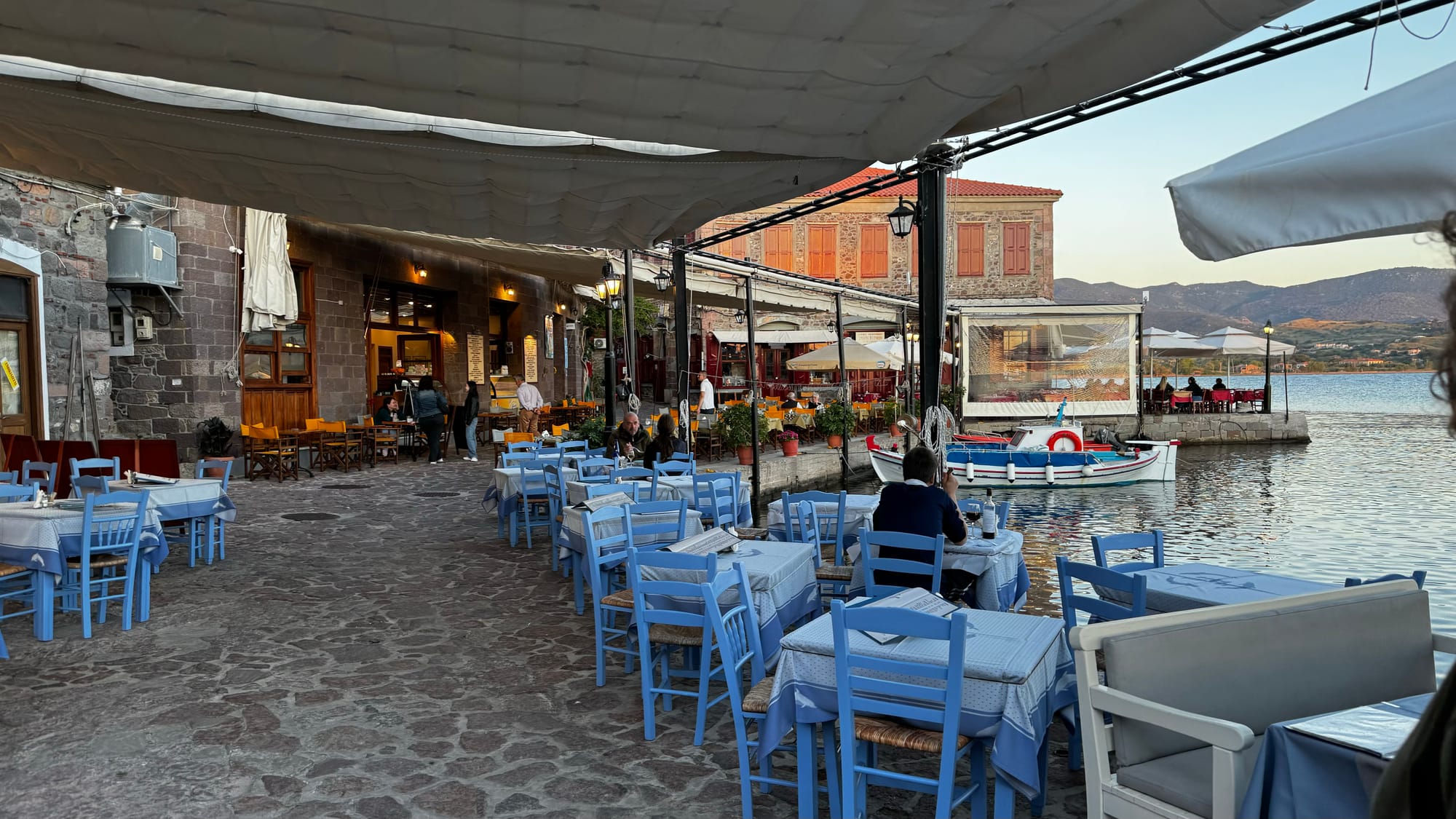



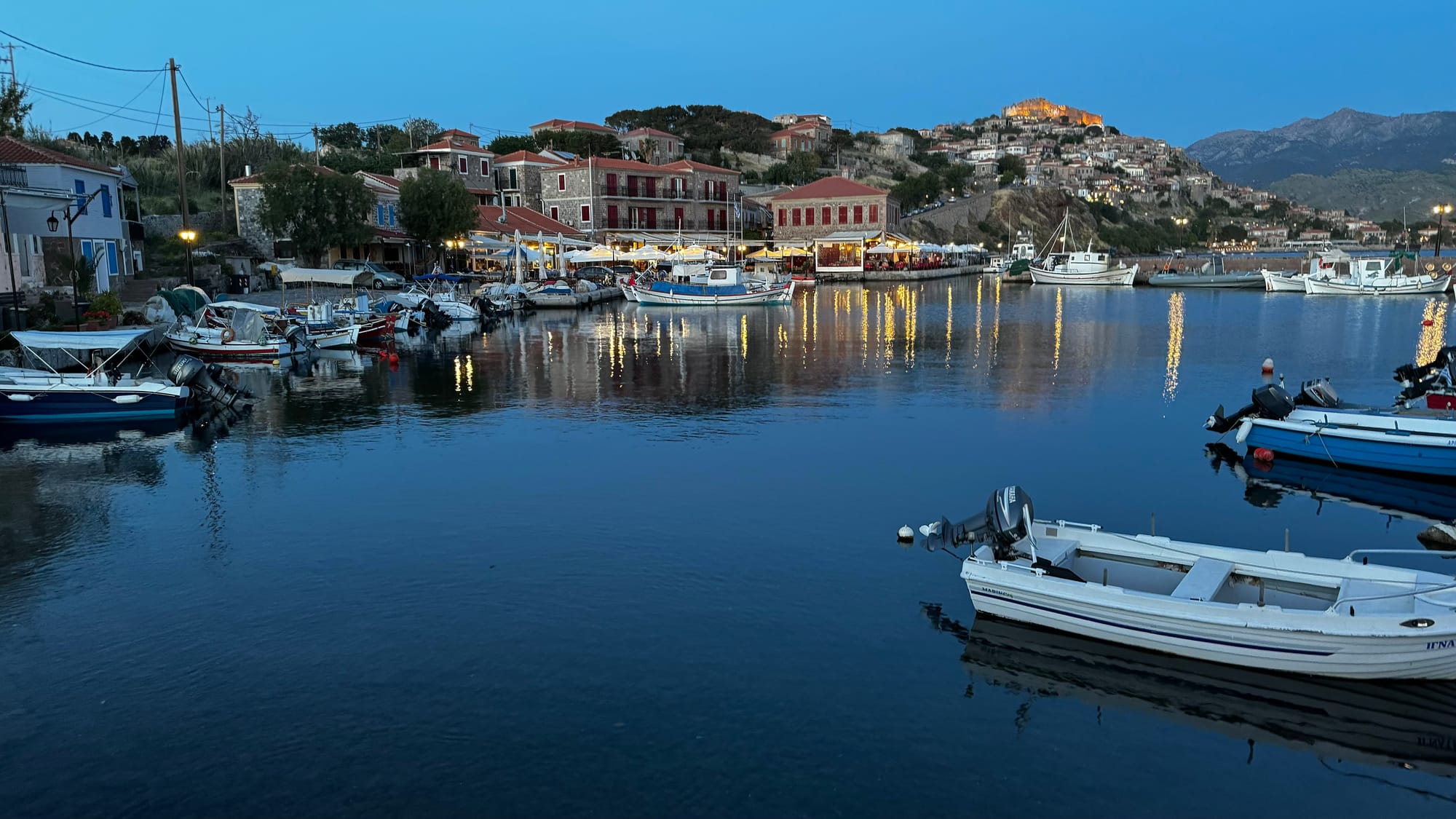

Views around Molyvos / Mithymna on Lesvos
We are in a different spot from before which is great having a new view. Even after two weeks, things have changed. So many of our friends have moved on, new boats are around, and lots of people are here, and the sailing season really does start to feel like it's underway!
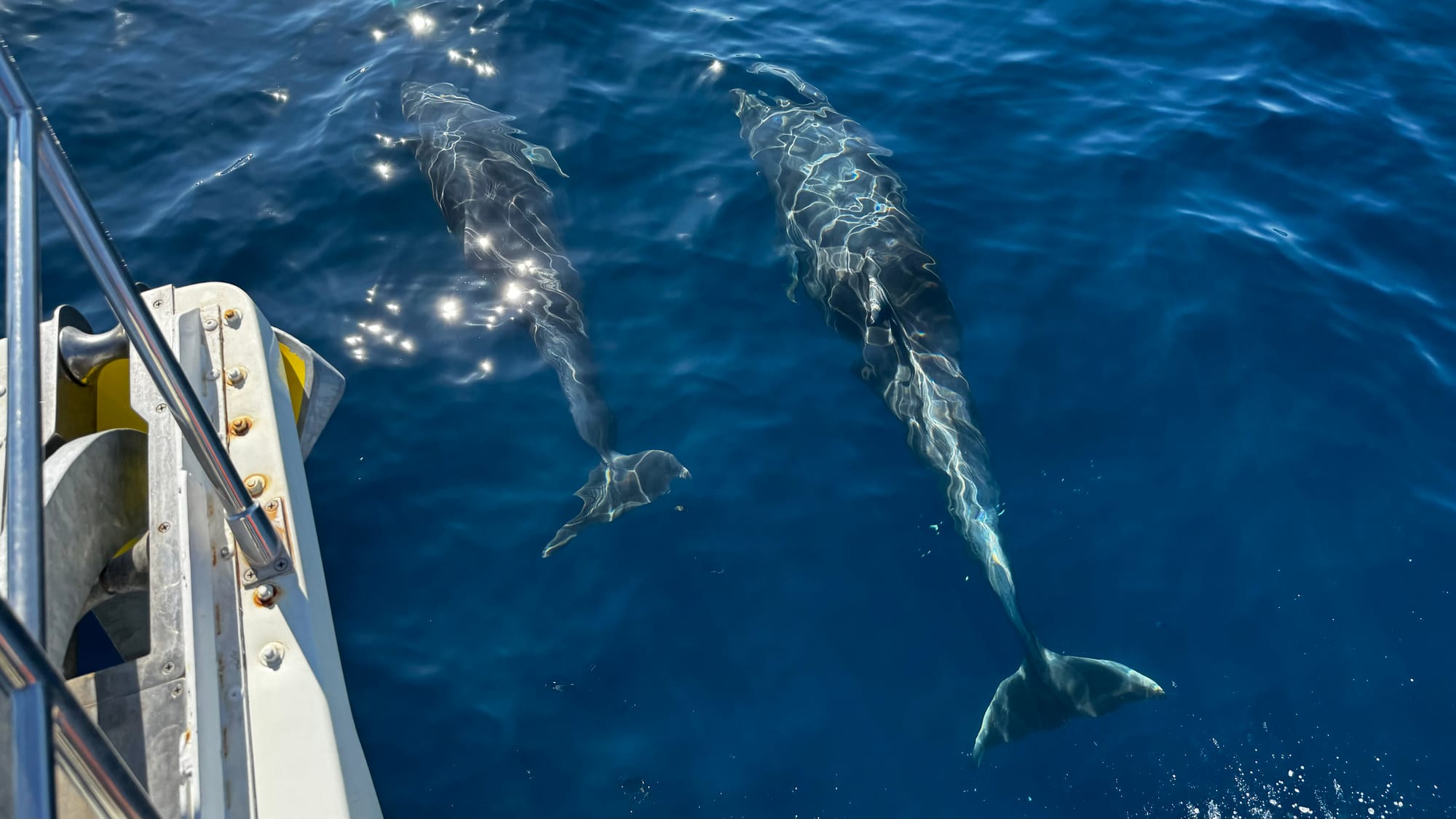
Boat-wise, Matilda handled the long crossings fine with no issues. We have our mechanic coming back on Monday with an electrician to try to diagnose the over-voltage errors we're getting (at the end of last season, we thought it was the alternators, but they've now been rebuilt, so that's not it).
Saturday night on our walk, we bumped into Mike and Linda on Jabulani II– Australian friends from Montenegro who also wintered here and have just returned to their boat in preparation for the season. It was lovely to catch up and share a drink with them and we'll have to have dinner again before we go.
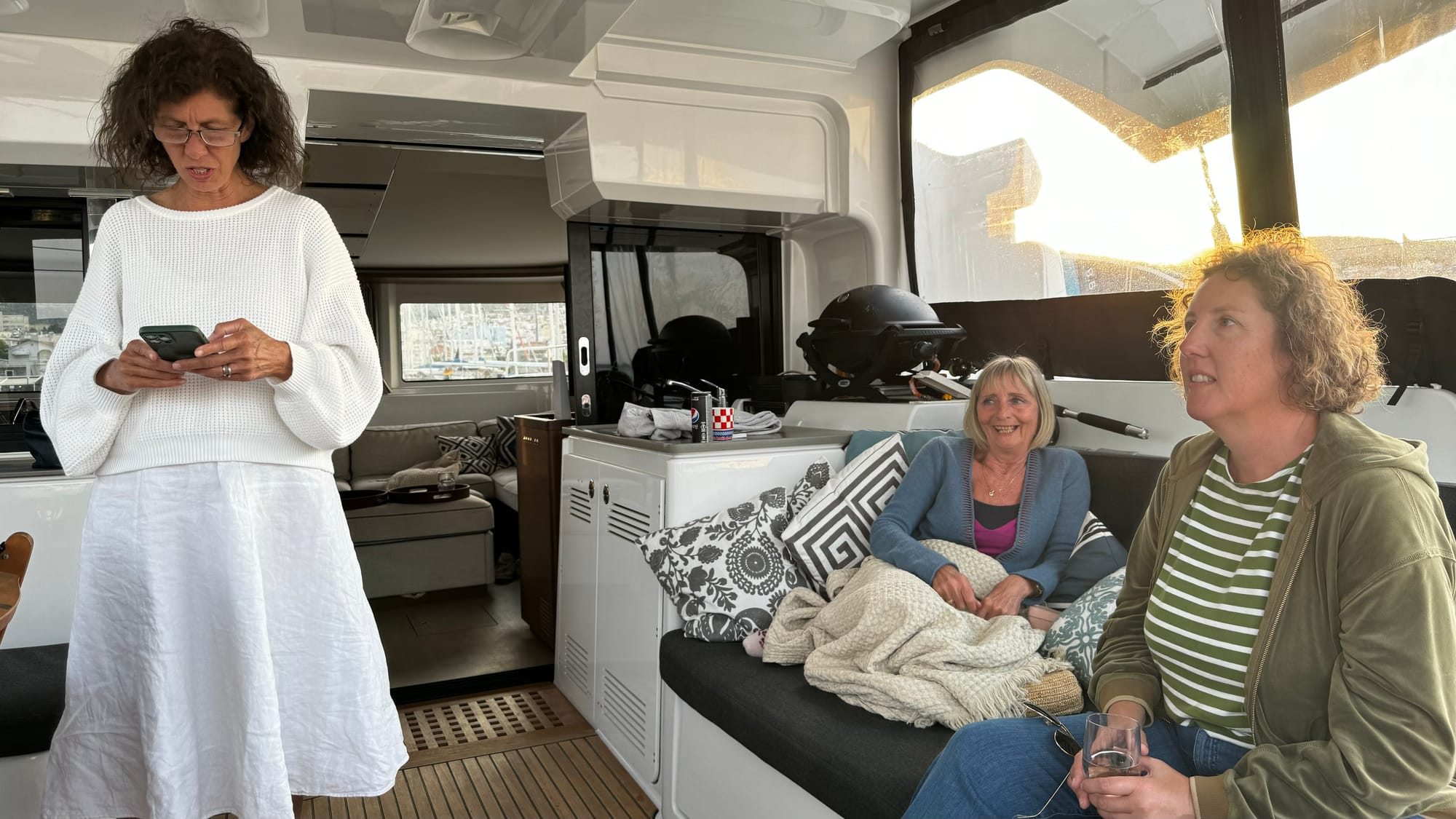
Other than that, we have a few appointments and are tidying the boat up, and we head off on Friday for Copenhagen, Denmark.
Until next time,
Tim & Karina
